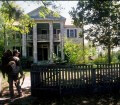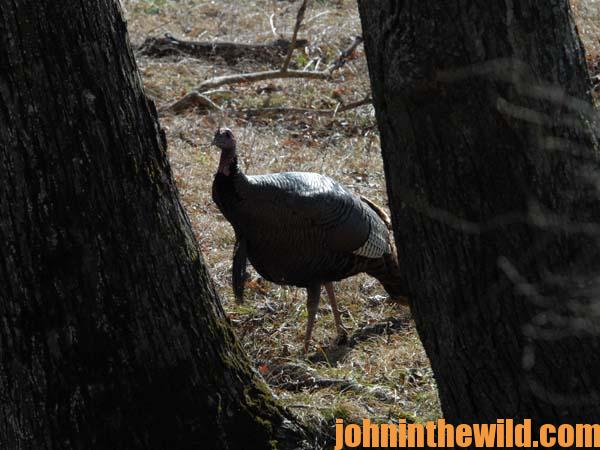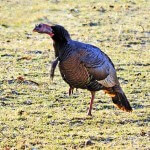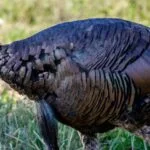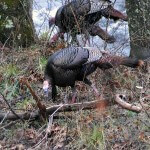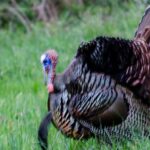John’s Note: Eddie Salter began hunting at the age of 8 near his home in Evergreen, Alabama. After learning turkey-hunting techniques from his father and grandfather, Eddie called in and harvested his first gobbler at the age of 10. In 1981, Salter began participating in competitive turkey calling and amassed an impressive list of state, regional and national titles. Salter, who was named one of the top-10 sportsmen in the U.S. in 1986 and 1989, is recognized as one of the country’s leading authorities on turkey hunting and has appeared on TV numerous times as well as in hunting videos and television commercials and been featured in outdoor magazine articles and radio interviews.
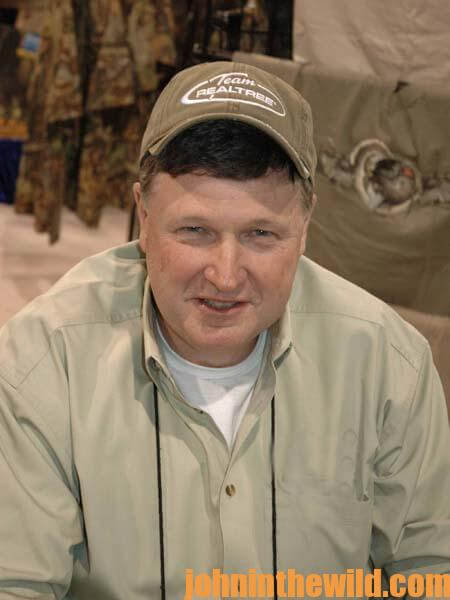 Question: How do you determine whether or not turkeys are on your property?
Question: How do you determine whether or not turkeys are on your property?
Salter: I try to cover every inch of that land. I walk the main roads and look for a turkey sign. The reason I choose to walk the roads and creek banks instead of dried creek beds and/or fire lanes is because they’re cleaner. I can move through them more quietly. I can ease around, and I can stop and look. You really want to be out there the first 15 minutes of daylight because most of the time the birds will gobble on their own then. You don’t have to make them gobble, and they’ll tell you they’re there.
Question: Do you believe in using decoys?
Salter: Over the years, I haven’t hunted that much with decoys, but here lately I’ve had a chance to experiment with different decoys. I’ve started using real-life mounted decoys, and I’ve been really successful with them. As a rule of thumb, I tell hunters to take two hen decoys and one jake decoy with them when hunting. That combination seems to work a lot better than only using one decoy. I suggest putting the decoys in open spots like fields, however make sure you have your back to a tree when you have decoys out. Then you’ll always have a clear field of view, so you can see other hunters that may try to sneak in and shoot your decoys. Always think safety first.
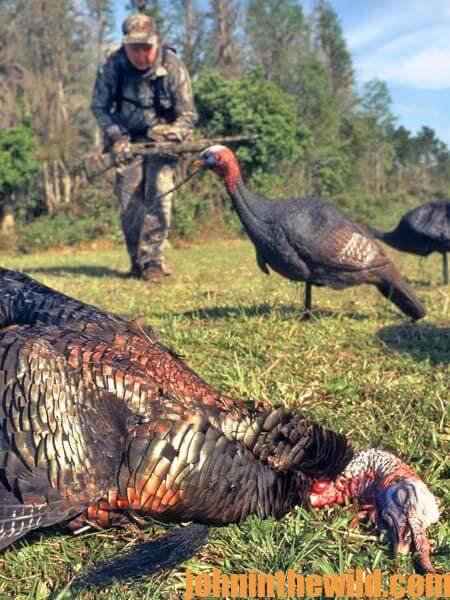 Question: Do you use multiple calls?
Question: Do you use multiple calls?
Salter: Yes, I use many calls. Many times I’ll use a box call and a mouth call at the same time. At other times, I’ll use a slate call and a mouth call together. Using multiple calls to call in a gobbler seems to work best in the early part of the season, because that’s when you hear more than one hen calling at the same time. Often if you can sound like a flock of turkeys, that ability makes a gobbler feel really good because instead of going to one girlfriend, he thinks he’s going to a sorority full of girls.
Question: When do you call to a turkey?
Salter: Normally I like to let a turkey gobble on his own, and I enjoy trying to answer a turkey instead of letting him answer me. I always ask people the same question, “Don’t you feel good when you call and a turkey answers?” Well, when you reverse that role, don’t you think that your answering a tom will make the turkey feel good? I think you get inside turkeys’ head when you do that, and you can force the action, instead of waiting for it to happen. To answer this question more completely, if you call to a bird and he flies down and he’s started your way, don’t call to him anymore. Let that be your last call.
To get John’s newest book, “The Turkey Gobbler Getter Manual,” for free, click here.
To learn more about turkey hunting from the masters, get these Kindle eBooks and print books by John E. Phillips, including: “The Turkey Hunter’s Bible (available as an eBook or in paperback),” “PhD Gobblers: How to Hunt the Smartest Turkeys in the World,” “Turkey Hunting Tactics,” “How to Hunt Turkeys with World Champion Preston Pittman,” “The 10 Sins of Turkey Hunting with Preston Pittman” and “Outdoor Life’s Complete Turkey Hunting.” Click here to get these books.

